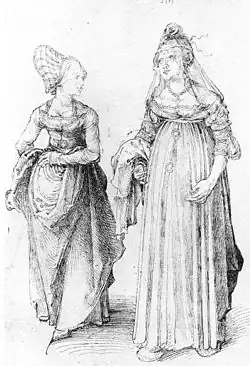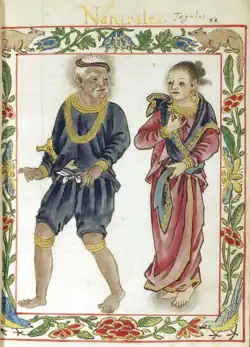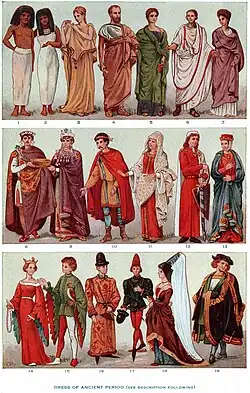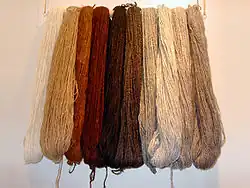Portal:Clothing
The Clothing Portal
Clothing (also known as clothes, garments, dress, apparel, or attire) is any item worn on a human body. Typically, clothing is made of fabrics or textiles, but over time it has included garments made from animal skin and other thin sheets of materials and natural products found in the environment, put together. The wearing of clothing is mostly restricted to human beings and is a feature of all human societies. The amount and type of clothing worn depends on gender, body type, social factors, and geographic considerations. Garments cover the body, footwear covers the feet, gloves cover the hands, while hats and headgear cover the head, and underwear covers the intimate parts.
Clothing has significant social factors as well. Wearing clothes is a variable social norm. It may connote modesty. Being deprived of clothing in front of others may be embarrassing. In many parts of the world, not wearing clothes in public so that genitals, breast, or buttocks are visible could be considered indecent exposure. Pubic area or genital coverage is the most frequently encountered minimum found cross-culturally and regardless of climate, implying social convention as the basis of customs. Clothing also may be used to communicate social status, wealth, group identity, and individualism. (Full article...)
Textile is an umbrella term that includes various fiber-based materials, including fibers, yarns, filaments, threads, and different types of fabric. At first, the word "textiles" only referred to woven fabrics. However, weaving is not the only manufacturing method, and many other methods were later developed to form textile structures based on their intended use. Knitting and non-woven are other popular types of fabric manufacturing. In the contemporary world, textiles satisfy the material needs for versatile applications, from simple daily clothing to bulletproof jackets, spacesuits, and doctor's gowns. (Full article...)
Textile arts are arts and crafts that use plant, animal, or synthetic fibers to construct practical or decorative objects. (Full article...)
Selected articles -
Did you know (auto generated)

- ... that after being criticized for dressing "like a doll" at an important meeting, pioneering Russian feminist Anna Filosofova replied that "clothes do not make the woman"?
- ... that according to Brandy Hellville, executives at Brandy Melville have bought the clothes off of employees' backs?
- ... that during the Second World War, the British government's campaign Make-Do and Mend encouraged the public to fashion men's clothes into womenswear?
- ... that Oduwa's reign saw cowries becoming so widespread as currency that nobles stitched them into their clothes, causing runaway inflation?
- ... that Liberian paramount chief Tamba Taylor worked as a tailor and claimed to have sewn clothes for Ethiopian emperor Haile Selassie and Ghanaian president Kwame Nkrumah?
- ... that Sandra Ng wore her own clothes while filming Love Lies to help the production crew save on the budget?
More Did you know
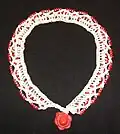
- ...that bead crochet (pictured) was a popular method of creating women's fashion accessories during the 1920s?
- ...that the Valois Tapestries, recording festivities at the court of Charles IX of France, include portraits of many members of the House of Valois–but none of the King?
- ...that butterfly motifs in the textiles of Oaxaca reflect pre-Christian spiritual beliefs among the Mazatec people?
Related portals
Selected image

The history of clothing and textiles attempts an objective survey of clothing and textiles throughout human history, identifying materials, tools, techniques, and influences, and the cultural significance of these items to the people who used them. Textiles, defined as felt or spun fibers made into yarn and subsequently netted, looped, knit or woven to make fabrics, appeared in the Middle East during the late Stone Age. From ancient times to the present day, methods of textile production have continually evolved, and the choices of textiles available have influenced how people carried their possessions, clothed themselves, and decorated their surroundings.
General images -
Selected quote
Main topics
Recognized content
Extended content
| ||
|---|---|---|
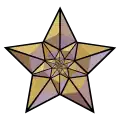
Featured articlesGood articlesFeatured pictures
Featured portals
|
Subcategories

WikiProjects
- Parent project
Wikipedia:WikiProject Arts
- Main project
Textile Arts WikiProject
- Participants
- Related projects
WikiProject Fashion • WikiProject Knots • WikiProject Sculpture • WikiProject Visual arts
What are WikiProjects?
Things you can do
 |
Here are some tasks awaiting attention:
|
Associated Wikimedia
The following Wikimedia Foundation sister projects provide more on this subject:
-
Commons
Free media repository -
Wikibooks
Free textbooks and manuals -
Wikidata
Free knowledge base -
Wikinews
Free-content news -
Wikiquote
Collection of quotations -
Wikisource
Free-content library -
Wikiversity
Free learning tools -
Wiktionary
Dictionary and thesaurus
-
 List of all portals
List of all portals -

-

-

-
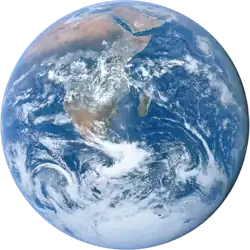
-

-

-

-

-

-
 Random portal
Random portal -
 WikiProject Portals
WikiProject Portals


.jpg)
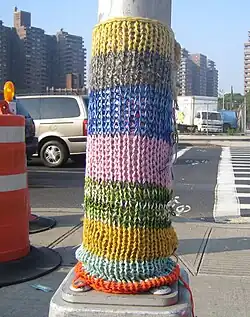
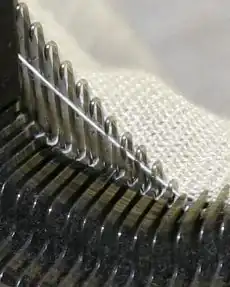
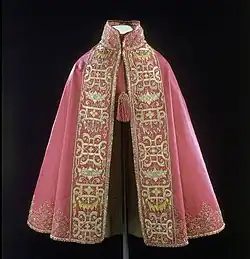
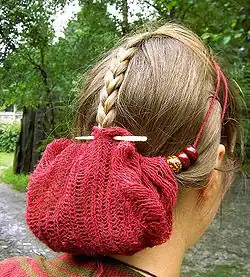
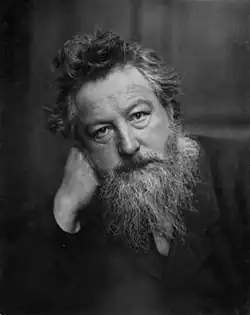


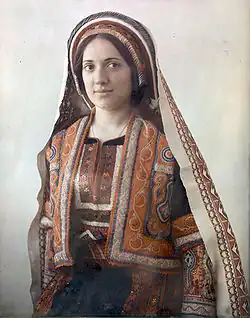
.jpg)
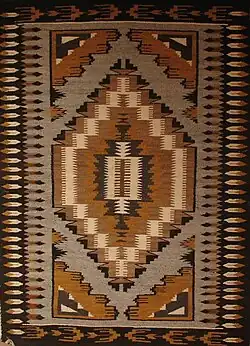

.jpg)

.jpg)
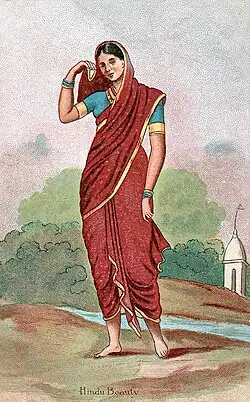


_DSCN2839.jpg)
.jpg)
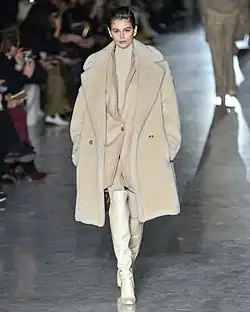
.jpg)


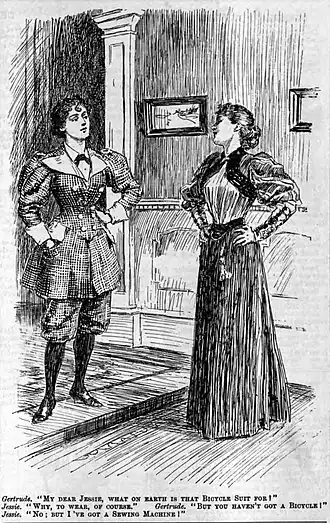
_-_Concert_in_an_Interior_-_1764.jpg)
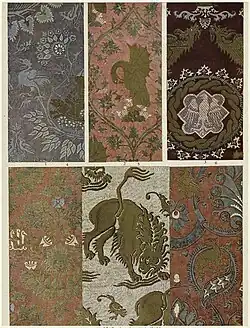


.svg.png)
.jpg)
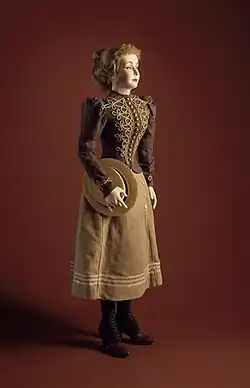
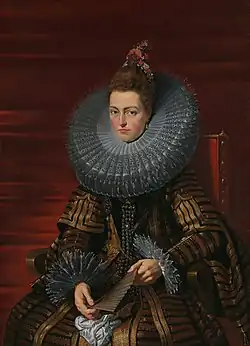
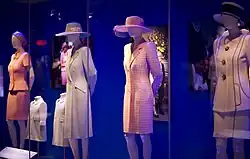



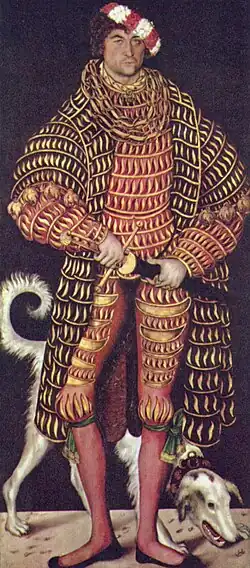
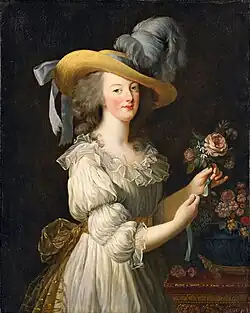
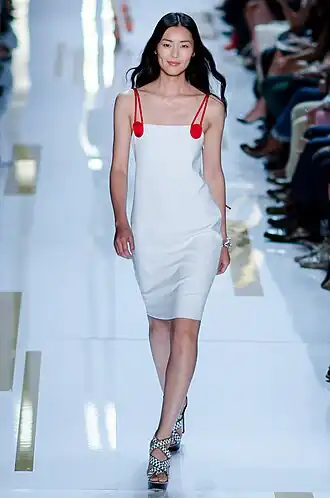
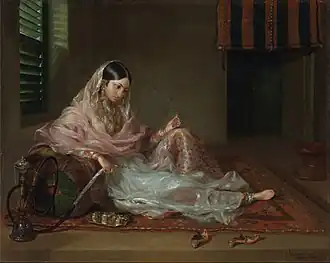
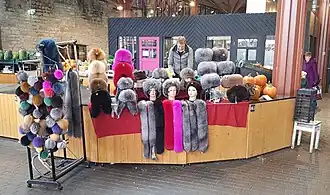
.jpg)
